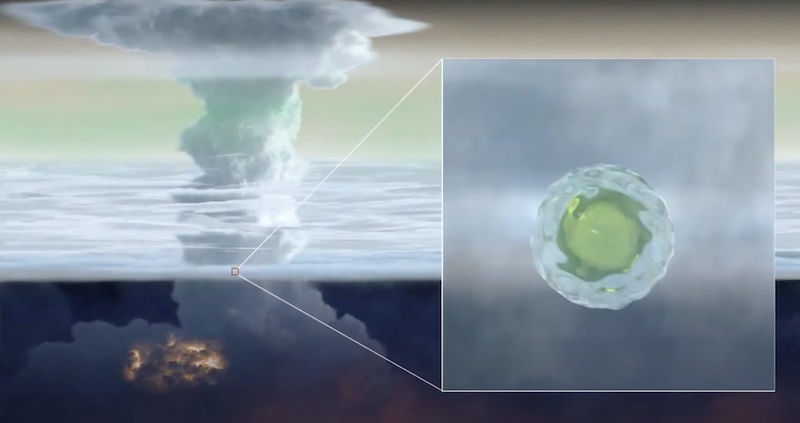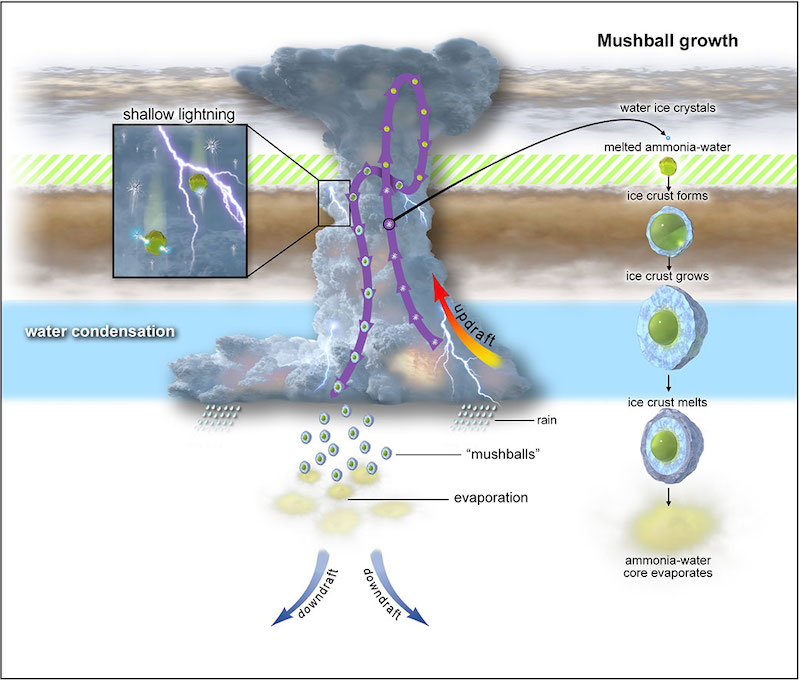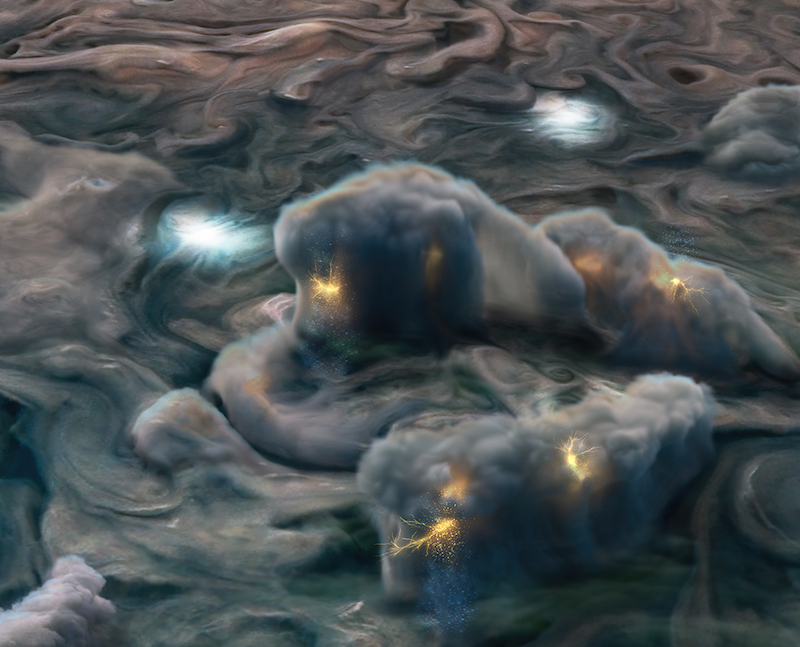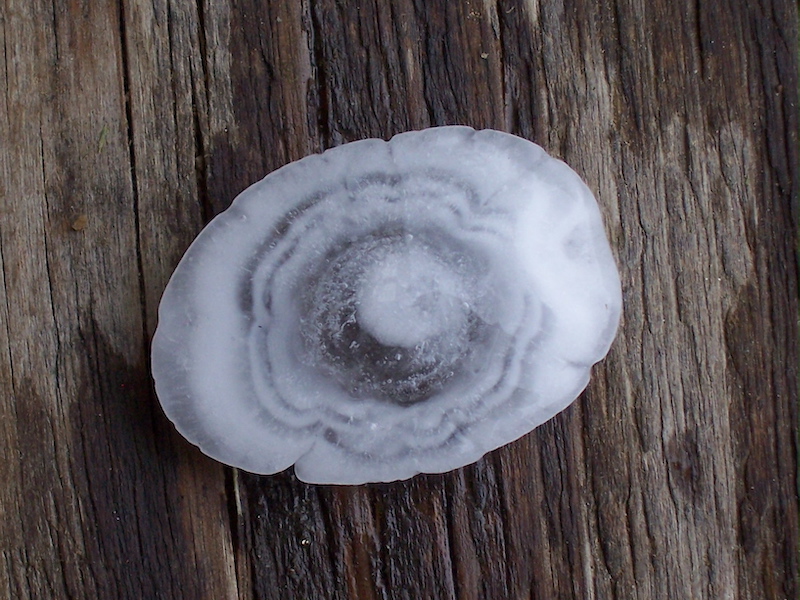
The case of the missing ammonia
On Earth, hailstones – icy pellets of frozen water – fall from the clouds like snow or rain. Other planets, for example giant Jupiter and Saturn, have hail, too. On the giant planets, hailstones are called mushballs. They’re larger and slushier on the inside than earthly hailstones. In mid-September 2021, the Europlanet Society said that mushballs can explain a missing substance on the ice giants Uranus and Neptune. The substance is the chemical compound ammonia. And these scientists said that mushballs on Uranus and Neptune carry ammonia deep down into the planets’ thick atmospheres, where earthly telescopes can’t detect it.
Tristan Guillot from the J.-L. Laboratory Lagrange in France presented the results of the new study at the virtual Europlanet Science Congress 2021, September 13 to 24.
Until now, scientists have been puzzled about why ammonia seems to be scarce in Uranus’ and Neptune’s atmospheres. The atmospheres of the two planets do contain other primordial gases, similar to methane. But that only makes the lack of ammonia more baffling.
These scientists said there is either something odd about the way Uranus and Neptune formed, or some other process must be depleting the ammonia. Now, they may have an answer.

Mushballs explain missing ammonia
Basically, the mushballs are giant hailstones composed of ammonia and water ice. They form quickly due to the ammonia liquifying the water ice crystals. This can occur even at the freezing temperature of -130 degrees Fahrenheit (-90 degrees Celsius).
In fact, these mushballs are larger than any hailstones on Earth, growing up to a weight of about 2.2 pounds (one kilogram) or more. They transport the trapped ammonia deep down into the atmospheres of planets like Jupiter, well below the base of the clouds. The same process should be happening, even more efficiently, on Uranus and Neptune, the researchers say. As Guillot stated:
Thermodynamic chemistry implies that this process is even more efficient in Uranus and Neptune, and the mushball seed region is extended and occurs at greater depths. Thus, ammonia is probably simply hidden in the deep atmospheres of these planets, beyond the reach of present-day instruments.

Mushballs on Jupiter: Juno provides clues
As Guillot explained, NASA’s Juno spacecraft, currently orbiting Jupiter, made a discovery that may help explain the mystery. Indeed, the planet’s atmosphere contains a lot of ammonia, but it is deeper down than previously thought. Guillot said:
The Juno spacecraft has shown that in Jupiter, ammonia is present in abundance, but generally much deeper than expected, thanks to the formation of mushballs. I show that what we have learned at Jupiter can be applied to provide a plausible solution to this mystery at Uranus and Neptune.
Last year, scientists theorized that huge mushballs – 2/3 water and 1/3 ammonia – form in the atmosphere of Jupiter. They are thought to consist of layers of water-ammonia slush and ice covered by a thicker water-ice crust. Scientists say they form in a manner similar to hailstones on Earth, growing larger as they move up or down through the Jovian atmosphere.
Guillot also commented on this at the time, saying:
Eventually, the mushballs get so big, even the updrafts can’t hold them, and they fall deeper into the atmosphere, encountering even warmer temperatures, where they eventually evaporate completely. Their action drags ammonia and water down to deep levels in the planet’s atmosphere. That explains why we don’t see much of it in these places with Juno’s Microwave Radiometer.

Mushballs and hailstones
On Earth, hailstones form from water droplets that freeze on contact with condensation nuclei, or cloud seeds. They are tiny particles, such as dust or soot, about 0.2 micrometers (µm) or 1/100 the size of a cloud water droplet. Hailstones can grow up to about six inches (15 cm) in diameter.
On planets like Jupiter, and likely Uranus and Neptune, the hailstone-like mushballs are thought to be larger and more slushy inside, hence the name.
Likewise, just as is thought to happen on the giant planets, hailstones on Earth form in thunderstorm clouds.
Future missions needed
To really nail down the hypothesis, however, and hopefully confirm it, a new mission or missions would be required. The last time Uranus and Neptune were visited was by the Voyager 2 spacecraft in the 1980s, and those were only brief flybys.
As noted in the paper:
The extent of the ammonia (and potentially water) depletion region is however unknown. Being able to determine how deep these species are transported will require a dedicated mission to map the deep atmospheric structure and understand moist convection in planets with hydrogen atmospheres.

Guillot also said:
To fully understand the processes, we need a dedicated mission to map the deep atmospheric structure and understand mixing in hydrogen atmospheres. Neptune and Uranus are a critical link between giant planets, like Jupiter and Saturn, and ice giant exoplanets that we are discovering in the galaxy. We really need to go there!
Bottom line: Giant slushy hailstones called mushballs may explain the long-standing mystery of why ammonia seems to be missing in the atmospheres of Uranus and Neptune. They transport the gas down far too deep into the atmosphere to be detected from Earth.
Source: Mushballs and the lack of Ammonia in Uranus and Neptune
The post Mushballs explain missing ammonia on ice giants first appeared on EarthSky.
0 Commentaires